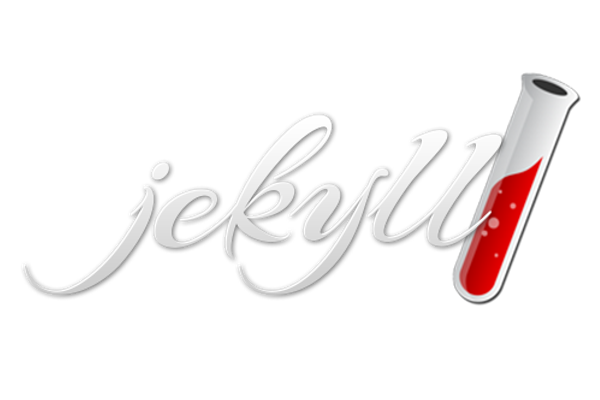
Flexslider in Jekyll
Implementing Flexslider in Jekyll in order to display posts and projects
Brendan Thompson
Tags: blog Web-Design

Implementing Flexslider in Jekyll in order to display posts and projects
Brendan Thompson
Tags: blog Web-Design
After implementing the Ideal Image Slider on two different Jekyll site and writing a blog post about it I tested it on mobile and was quite disheartened. Not only did the slider not rotate automatically, the user wasn’t even able to navigate it manually. I quickly had to replace it, and what I found was leaps and bounds better. Flexslider 2 by WooCommerce claims to be “The best responsive slider. Period.”, and at least when it comes to jekyll I believe it to be true. Getting set up with Flexslider is very intuitive and it looks beautiful. The customizable captions, nav controls, and thumbnail sliders make it incredibly powerful while it remains simple to implement.
David Ollerhead gives a pretty good example of creating the slider for pictures, but it didn't work for me the way he set his up. Furthermore, I wanted to use mine to display posts whereas his was just a carousel of pictures. After some tinkering it quickly came together and can be seen to the right displaying all my Recent Posts.
Setting up the slider was incredibly easy. The steps basically break down into adding and linking to the css & javascript dependencies, creating the sliders, and including them within the page.
There are only 5 different dependency files necessary to get the slider to run and they can all be found in the folder downloaded from the official WooCommerce Flexslider page.
In the folder downloaded there should be a file called flexslider.css which should be added to the Jekyll site in the folder /assets/css/
The CSS file:
flexslider.css
Again in the folder downloaded there should be two .js files, both of which should be added to the jekyll site in a new folder called /assets/js/flexslider
The two JavaScript files:
jquery.flexslider.js
jquery.flexslider-min.js
For the flexslider, the arrows that work as navigation are actually defined as fonts, and therefore must be included in /assets/css/fonts/. I was able to get it to work with just two of the four files that got downloaded in the fonts folder from Flexslider.
The two Nav Icon Font files:
flexslider-icon.ttf
flexslider-icon.woff
To create the slider it must be initialized in JavaScript and defined in HTML.
In a file called /assets/js/app.js the slider needs to be initialized, which is where most of the customization comes in. The best way to do this is to find the version of code described on the flexslider demo site which will look something like below:
// Initialise FlexSlider for Carousels
$(window).load(function() {
$('.flexslider').flexslider({
animation: "fade",
directionNav: true,
slideshowSpeed: 5000,
animationSpeed: 600,
touch: true
});
});
These are the options that I have found:
Animation: “fade” or “slide”controlNav: “thumbnails” or false (this is for the thumbnail sliders)directionNav: true or false (this is for the directional arrows)slideshow: true or falseslideshowSpeed: number in millisecondsanimationSpeed: number in millisecondsanimationLoop: true or falsetouch: true or false (for touchscreens)itemWidth: width in pixelsitemHeight: height in pixelsitemMargin: margin in pixelsasNavFor: used by thumbnail controlNav sliders to select main slidersync: used by main slider to sync with thumbnail controlNav sliderIn the /_includes/ folder add the HTML that describes the markup for the slider.
My flexslider-posts.html:
<div>
<div class="home-title">
<h3>Recent Posts</h3>
</div>
<div class="flexslider">
<ul class="slides">
{% for page in site.categories.blog %}
<li>
<a href="{{ site.url}}{{ page.permalink }}">
<img src="{{ page.image-slider }}">
<p class="flex-caption">{{ page.excerpt }}</p>
</a>
</li>
{% endfor %}
</ul>
</div>
<p style="text-align: center"><a href="{{ site.url }}/posts-page">See All Posts</a></p>
</div>
The bulk of the include is where the flexslider is dynamically compiled based off the posts. Basically for each post in the site with the category blog a li is generated. They are all contained in the <ul class="slides>" which is nested in the <div class="flexslider">. All of the content is taken from the front matter of the individual posts.
The main stylesheet needs to be included in the <head> of the page. For me, I included the code for linking to it in my /_includes/head.html which gets included in my main layout called page.html
<link rel="stylesheet" href="/assets/css/flexslider.css">
The scripts must be included at the very end of the <body> of the page. For me, I have an include called scripts.html where all of my scripts get linked.
<!-- Flexslider Scripts
=================================================-->
<!-- Google CDN Hosted jQuery -->
<script src="//ajax.googleapis.com/ajax/libs/jquery/2.0.2/jquery.min.js"></script>
<!-- Flexslider Library -->
<script src="/assets/js/flexslider/jquery.flexslider-min.js"></script>
<!-- Initialisation Code -->
<script src="/assets/js/app.js"></script>
To implement the slider onto an actual page just include it!
{% include flexslider-posts.html %}
Implementing the Flexslider is a fairly straightforward process, but if you get caught up anywhere feel free to contact me. I customized my captions by overriding the flex-caption class in my /assets/css/main.scss. Good Luck!